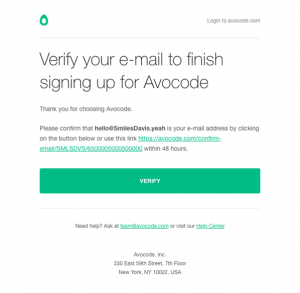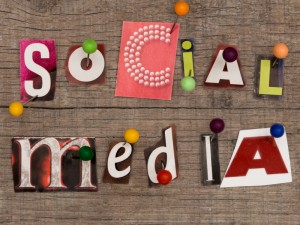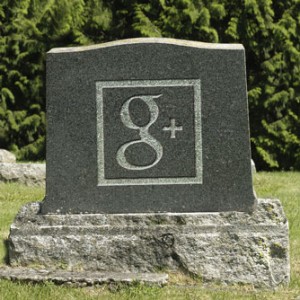You’ll be glad to hear that I’m like any other social, mobile millennial out there. I curl into bed at night and before I drift into la la land, I bask in the glow of my smartphone and scroll through the depths of my social media feeds—a modern lullabye.
First it’s Twitter—what news did I miss that day? Who’s trying to slide into my DMs? Then it’s Instagram. What silly memes have my friends tagged me in? Whose filtered photo is giving me #FOMO? And finally, it’s Facebook. Which one of my high school “friends” is ranting about politics? Whose auntie just liked her post about her recent vacation? And then, it happens. Another. Engagement. Photo. I simply can’t. Goodnight.
Sound familiar?
I know it does. In the age of social, it’s certainly easy for customers to make themselves heard. But imagine if some of your favorite brands acted the same way your least favorite social “friends” did. Would you still be so loyal to said brand?
Your Friends Don’t Ghost You, So Why Should Brands?
There’s no question that ghosting, or ending a text conversation abruptly with no explanation, is impersonal and frustrating. But private messaging is making it easier for people and brands to be held accountable for ghosting and blatantly ignoring a message.
The popularity of private messaging apps such as Messenger (900 million people and 50 million businesses), SnapChat (100 million people) and WeChat (697 million people) has given the read receipt more popularity. Twitter even announced recently the rollout of typing indicators and read receipts in your Twitter DMs.
With these indicators becoming the standard in private messaging, imagine you’ve been conversing with a brand about a customer service issue you’re having. Things are going well. You’re on your way to resolution, but then it happens. You see a read receipt on your last message but get no reply. You wait. And wait. And wait. Still nothing.
Isn’t this experience frustrating? As a customer, don’t you feel upset with the brand? Is this their way of breaking up with you? Well now the feeling is mutual. One Gartner study found that brands who ignore social customer service messages can see a “15 percent increase in churn rate for existing customers.” Brand bye.

Passive-Aggressive Brands Lose On Social
As much as ghosting hurts, passive-aggressive rants on social are indirect, ambiguous and can cause your customers’ brand loyalties to be uprooted. 92% of consumers report that a customer service agent’s perceived “happiness” has an impact on their customer experience with the brand (LiveOps).
So what if the agent on the other side of a brand’s support channel was feeling particularly moody and publicly ranting on and on, being vague about a customer he’s currently helping right after you Tweeted a reply about your issue?
These intentionally negative messages that allude to another person on social, also known as sub-tweets, show a level of brand immaturity and an inability to handle issues effectively. As such, you’d take the impersonality of that interaction as an indication that the brand is not equipped to handle your customer service request now or in the future. If the brand can’t handle you at your worst, it certainly can’t handle you at your best.

Don’t Hack My Feed
Feeling your best is the optimal time to take 100 selfies, sift through them and post the top ten consecutively in order to get likes and a bit of an ego boost, right? Possibly, but more possibly not if you don’t want to be labeled as the token over-poster.
When you’re scrolling through your social feeds and come across repetitive posts or worse, ads from brands, it makes your already busy social feeds feel cluttered and irrelevant. I understand, brands want our business. But instead of being thirsty and asking me for it unsolicited and repeatedly, why don’t you provide it to me proactively, where I am in-the-moment?
Take this example from Zappos. An overzealous marketer spammed one of their customers with fourteen emails, which left the user, Lisa, with a bad taste in her mouth. She most likely was trying to login to her account settings to update her email preferences, which led to a separate issue and caused Lisa to reach out for support over social.

Getting hit with junk over and over proved to be disappointing for her, enough so that it created an additional issue and deeper level of dissatisfaction. But upon hearing her complaint, instead of simply apologizing to Lisa, the Zappos customer service agent replied proactively and gave Lisa an additional coupon. I know I can always get behind a good coupon. Gold star for Zappos.
The Humble Brag
Receiving a gold star, or important recognition as a brand is certainly something to be proud of, like when Conversocial customer Alaska Airlines was ranked number one for customer service on Twitter following a report from Engagement Labs. But there’s a fine line between being proud and bragging. See what I did there?
There’s a good chance people in your network are just as excited as you for your brand and these achievements. But taking humble brag posts a step too far by adding an unhealthy amount of #HashtagsThatLookLikeThis to promote how awesome your brand is can seem disingenuous. Especially in a world where it feels like everyone is already #blessed.
In all seriousness, unlike some of your favorite social “friends,” social media has grown up and brands have too. This is why we don’t often see them committing these social media faux pas. Most well adjusted individuals prefer private, meaningful, and authentic relationships on social and your brand should meet them there. When they do, especially with genuine humanity and maturity, brands are able to turn negative customer experiences to positive ones and even convert regular customers into brand advocates and eventually experts.
Has your brand grown up beyond your least favorite social friends? Take our Social Maturity Index quiz to find out.
Digital & Social Articles on Business 2 Community(24)







